Keeping culture alive through weaving
By Stacey Larner, Librarian, Queensland Memory & Joan Bruce, Specialist Librarian, Queensland Memory | 20 July 2021
One of the most complex and beautiful examples of Aboriginal and Torres Strait Islander technology is basket-weaving—the myriad of local forms reflecting the diverse country of the people who make them.
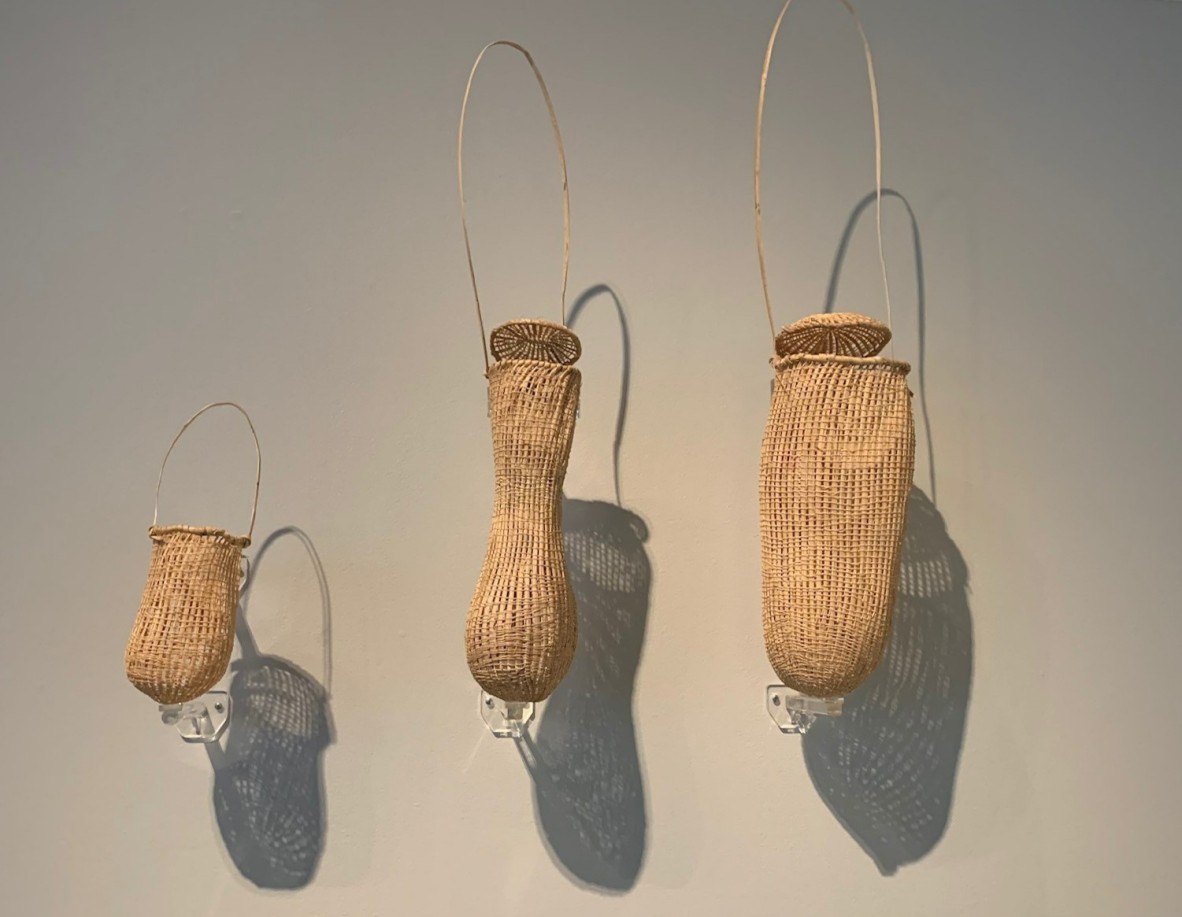
Kakan (dilly bags) – Delissa Walker – On loan for Entwined courtesy of Cairns Art Gallery. Photograph by Stacey Larner.
Different plant fibres are used across Queensland. Plants such as lomandra species (wetland grasses), lawyer cane (a spiky vine known as “wait-a-while" for its tenacious grip on unsuspecting passers-by), pandanus and black palm have all been well-documented as basket material.
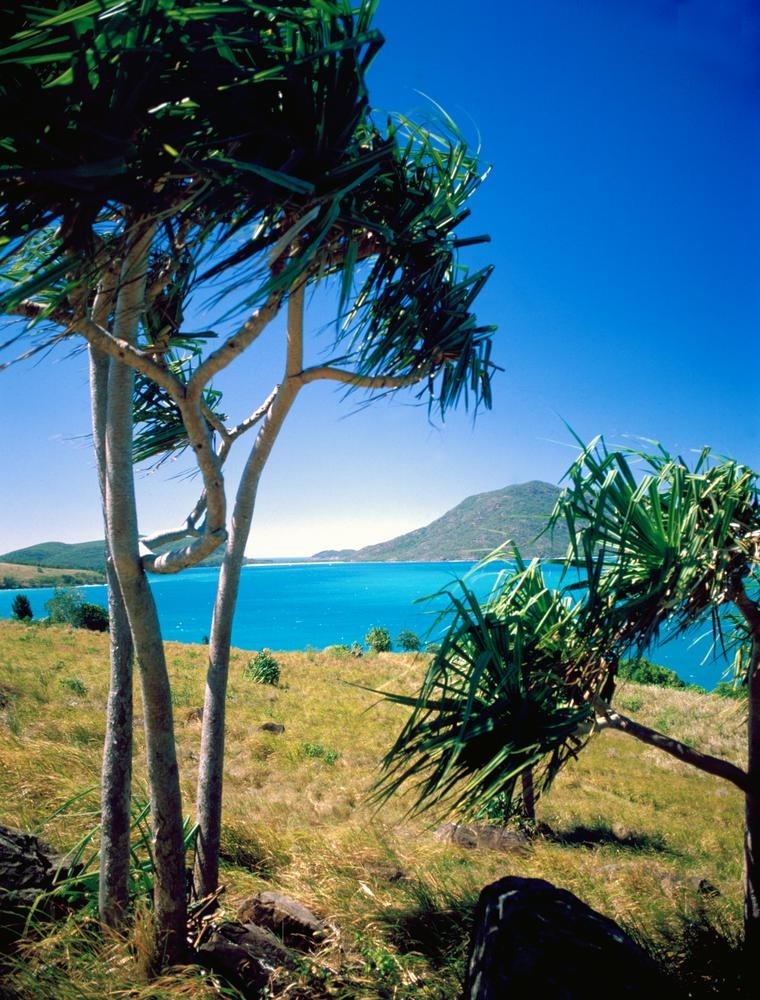
View of Lindeman Island through wind swept pandanus palms, Queensland,1985. 7435 Ron and Ngaire Gale Collection, image number 509-15-05, John Oxley Library.
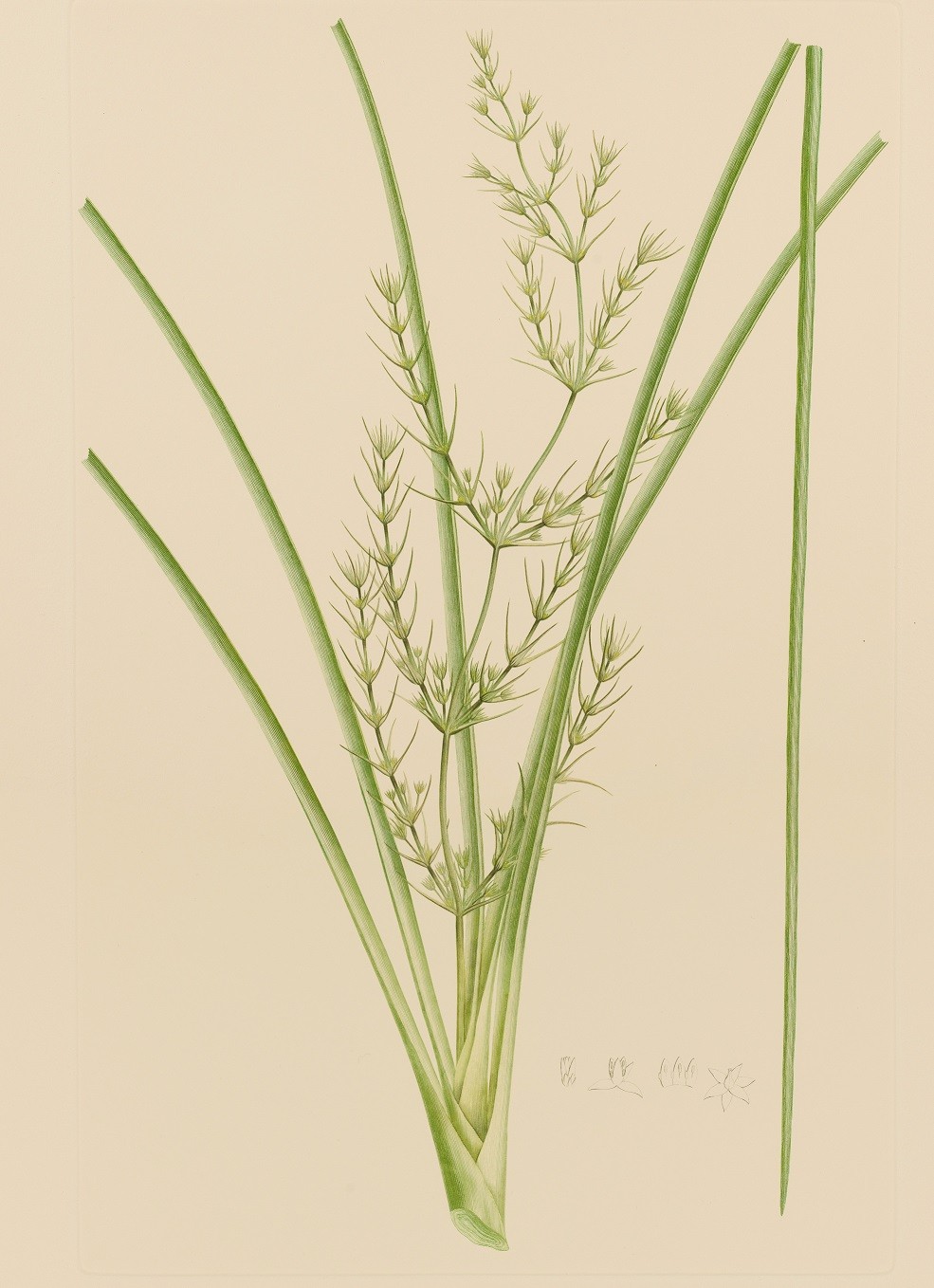
Lomandra longifolia, plate 330, Banks’ Florilegium. Courtesy of Natural History Museum
Banks' florilegium : a publication in thirty-four parts of seven hundred and thirty-eight copperplate engravings of plants collected on Captain James Cook's first voyage round the world in H.M.S. Endeavour 1768-1771 / the specimens were gathered and classified by ... Sir Joseph Banks and Daniel Solander ; and were accurately engraved between 1771 and 1784 after drawings taken from nature by Sydney Parkinson.
Joseph Banks 1743-1820. ; Daniel Charles Solander 1733-1782. ; Sydney Parkinson 1745?-1771. ; London : Alecto Historical Editions in association with the British Museum Natural History ; 1980-1990
The elegant engineering of the “two horned” baskets of North Queensland embodies the flexibility and strength of lawyer vine, along with the ancestral knowledge of the rainforest people who make them. These are practical tools with great beauty and cultural power. Each basket takes 4-5 weeks to make and can last around 3 years, used every day in the rainforest. Bicornual baskets are designed to sit in running water, to leach toxins from seeds that would otherwise be poisonous. These utilitarian and beautiful baskets allowed a wider range of foods to be eaten.
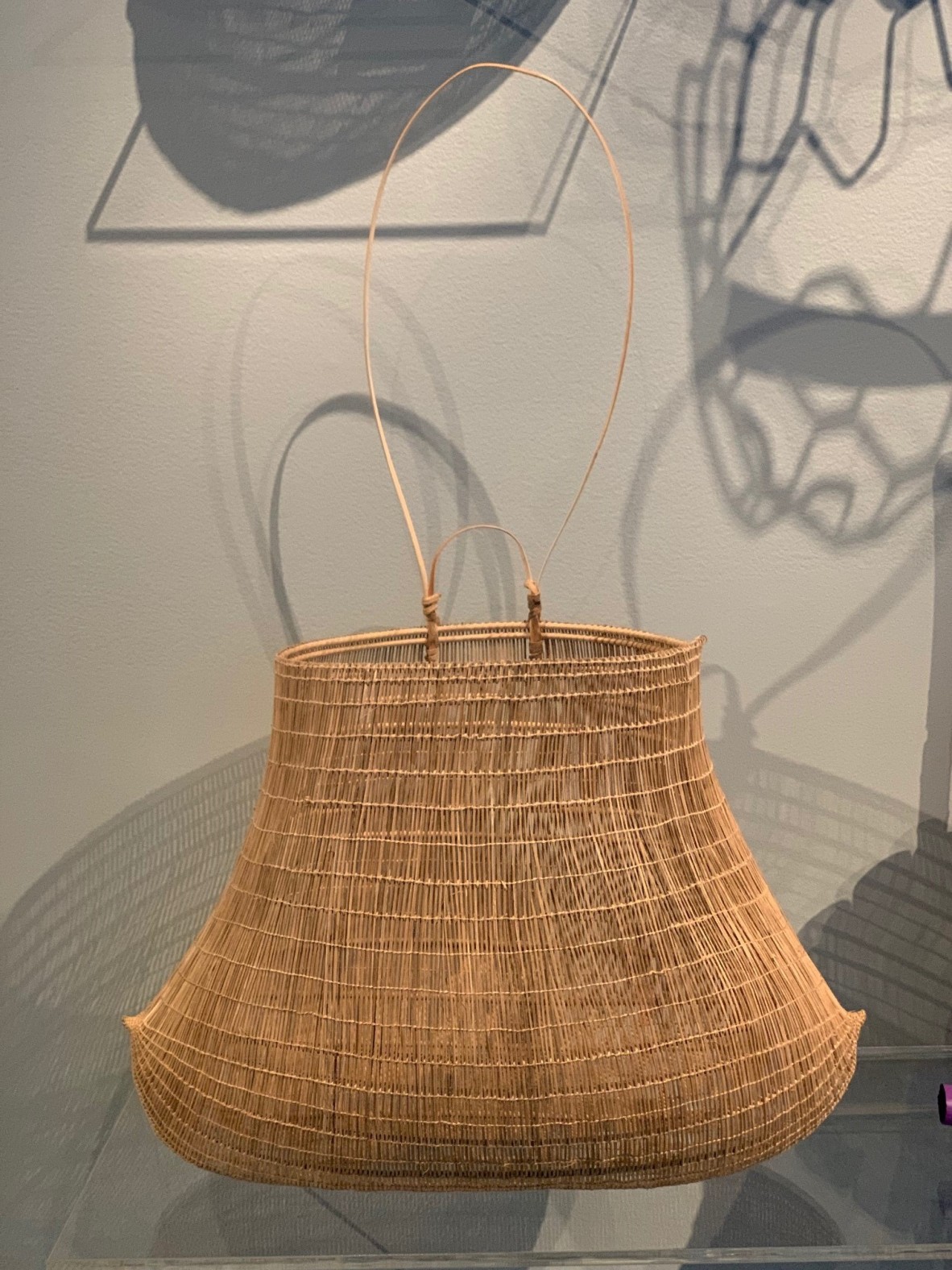
Jawun – Abe Muriata – On loan for Entwined courtesy of the collection of The University of Queensland. Photograph by Stacey Larner.
During the 2009 Laura Aboriginal Dance Festival, a group of weavers from Erub, Torres Strait and Hope Vale, Cape York ran a weaving workshop together. This exchange of technique and culture can be seen in the Weaving Exchange: Erub Island and Hopevale 2009 video below.
27281 Weaving Exchange: Erub Island and Hopevale 2009. Sarah Scragg, John Oxley Library, State Library of Queensland.
Abe Muriata, a Girramay man of the Cardwell region in North Queensland, is one of few men weaving jawun. He describes himself as self-taught: he watched his grandmother weave jawun but was not taught by her. Abe experiments with technique and media, creating traditional baskets and also reinterpreting traditional techniques for modern materials.
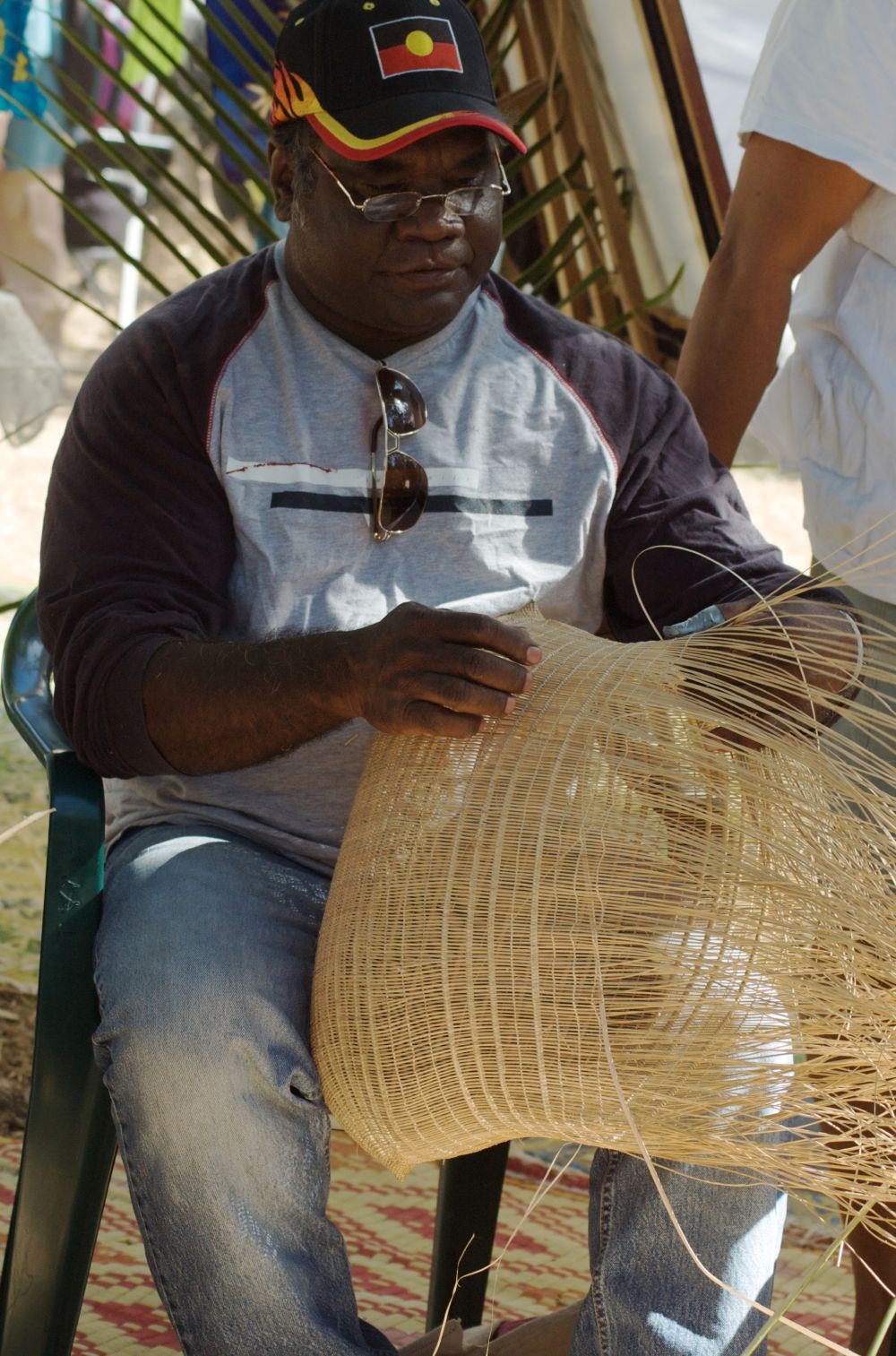
Abe Muriata weaving at the Laura Aboriginal Dance Festival, 2009 (0001-0171). 10183 Laura Aboriginal Dance Festival photographs, image number 10183-0001-0171, John Oxley Library, State Library of Queensland.
Rhonda Brim, a Djabugay Elder, weaves bicornual baskets with lawyer cane, and dilly bags with lomandra (a wetland species) or black palm. When she was in her twenties one of her grandmothers, Wilma Walker, shared the cultural knowledge and techniques. Determined to keep culture alive, she teaches the younger generations, carrying on the long basket-making tradition.
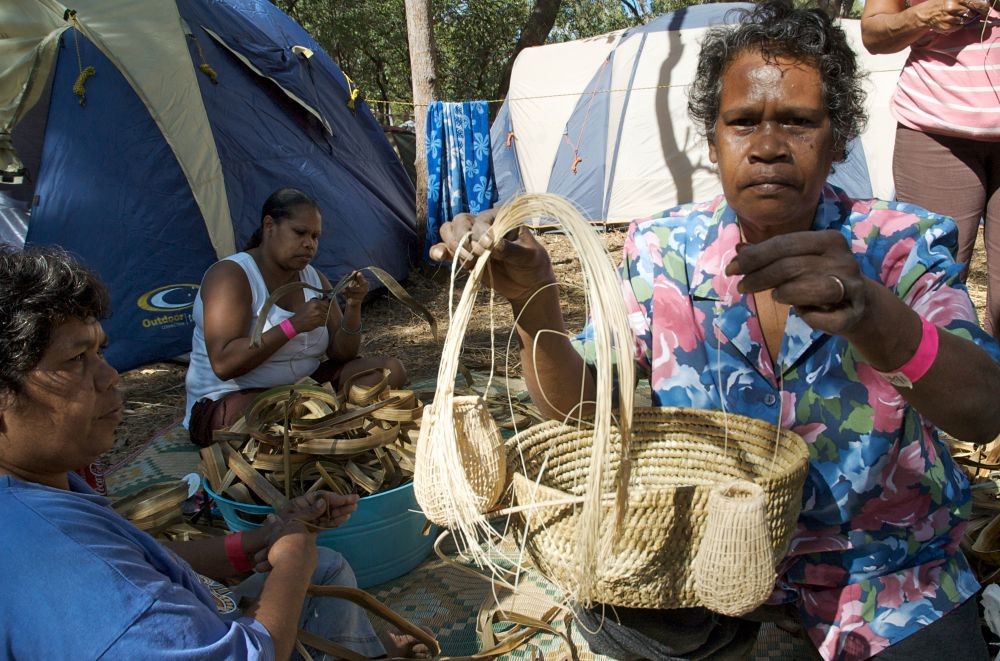
Rhonda Brim displaying her baskets at the Laura Aboriginal Dance Festival, 2009. 10183 Laura Aboriginal Dance Festival photographs, image number 10183-0001-0013, John Oxley Library, State Library of Queensland.
Fine examples of weaving and the weavers who make them are featured in both the Entwined: plants and people exhibition and Kindred Spirits: plants and people publication. Kindred Spirits: plants and people is available to purchase from the Library Book Shop. With text by Shannon Brett, featuring images from State Library’s collection and more, it explores the ancient and ongoing connection between First Nations people and plants in Queensland. This publication was developed in response to the Entwined: plants and people exhibition which is open now and runs until November 14, 2021.
Other blogs relating to Entwined: plants and people
- Queensland's fern fever
- Xanthorrhoeas - An Australian Explosive
- Orchidelirium: when love turns to obsession
- Queensland’s coastal kidneys: mangroves
- Bountiful bunyas : a charismatic tree with a fascinating history
- The grand florilegiums of Joseph Banks and Ferdinand Bauer
- Queensland’s gympie-gympie: the world’s most painful plant
- Grand botanical publications of the 18th and 19th centuries: from scientific discovery to practical horticulture
Commitment statement
This material contains Aboriginal and/or Torres Strait Islander content, and has been made available in accordance with State Library of Queensland’s Aboriginal and Torres Strait Islander Collections Commitments.
Comments
Your email address will not be published.
We welcome relevant, respectful comments.